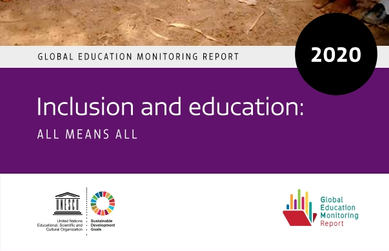Inclusion and Education – All Means All
Formal Education
 Link
Link
Fewer than 10% of countries have
laws that help ensure full inclusion in education, according to UNESCO’s 2020
Global Education Monitoring Report: Inclusion and Education – All means all.
The report provides an in-depth
analysis of key factors for exclusion of learners in education systems
worldwide including background, identity and ability (i.e. gender, age,
location, poverty, disability, ethnicity, indigeneity, language, religion,
migration or displacement status, sexual orientation or gender identity
expression, incarceration, beliefs and attitudes).
It identifies an exacerbation of
exclusion during the COVID-19 pandemic and estimates that about 40% of low and
lower-middle income countries have not supported disadvantaged learners during
temporary school shutdown.
The 2020 Global Education
Monitoring (GEM) Report urges countries to focus on those left behind as
schools reopen so as to foster more resilient and equal societies.
“To rise to the challenges of our time, a move
towards more inclusive education is imperative”, said the Director-General of
UNESCO, Audrey Azoulay. “Rethinking the future of education is all the more
important following the Covid-19 pandemic, which further widened and put a
spotlight on inequalities. Failure to act will hinder the progress of
societies.”
Read the full Report, Here.





